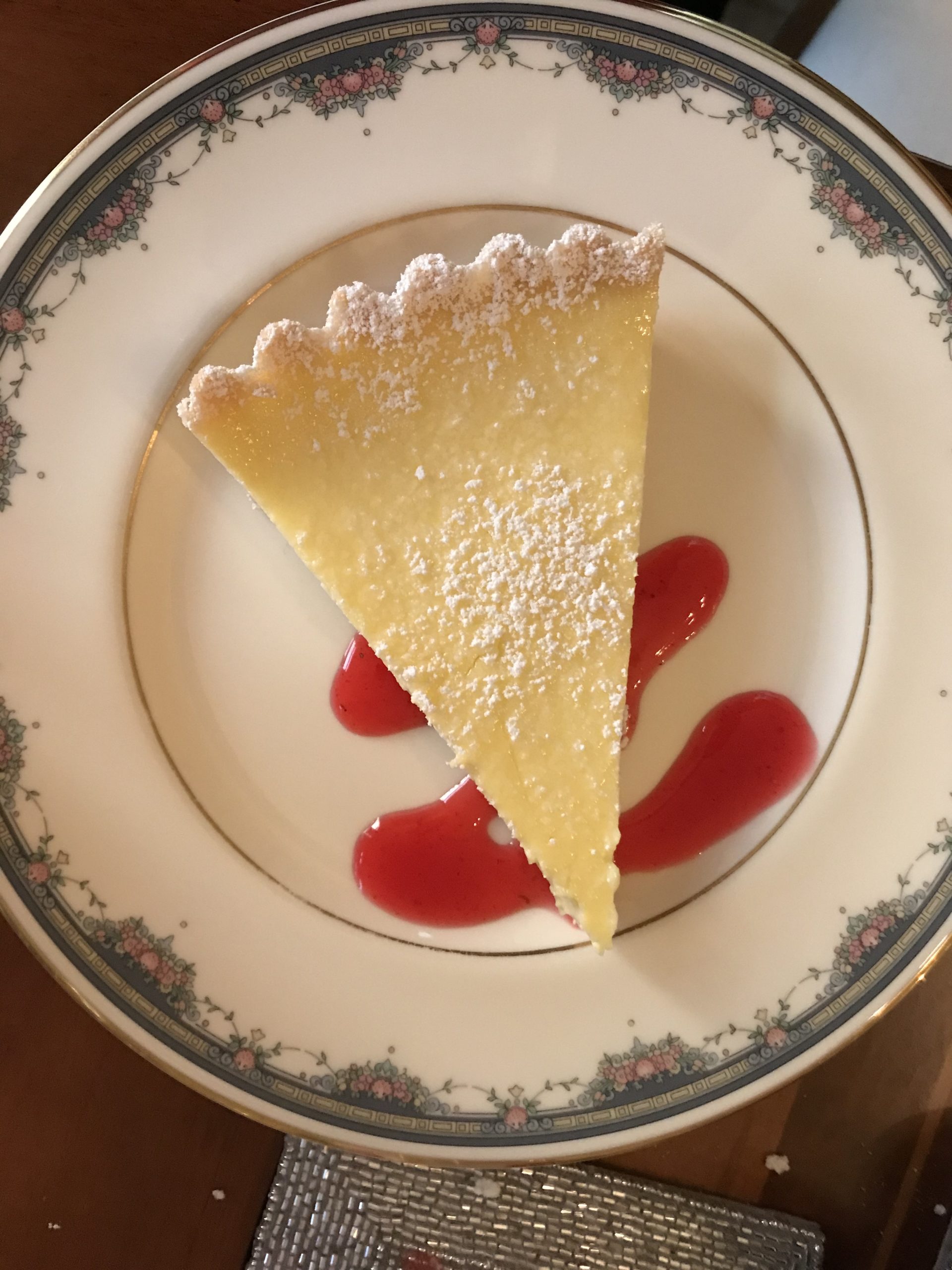Classic Lemon Tart
A super dessert and needs no introductions from me. It can however be difficult to get just right. The pastry needs to be thin and crisp and the filling smooth and most of all tasting of lemon. I have had so many disappointments in restaurants when I have ordered the said tart only to find lemon flavour is sadly lacking. Much better to make your own !
Preparation
To make the pastry. I use a food processor fitted with a blade attachment. Place in the bowl the flour, salt, and cubed chilled butter. Blitz briefly (about 10 seconds) until the mixture resembles fine breadcrumbs. With the motor running then pour in the water, in a thin steady stream and allow the machine to form the mixture into a lump of dough. Turn out onto the worktop, form into a ball then cover with a beeswax wrap or baking paper and pop into the fridge for 30 minutes to rest.
When ready to roll out – I use two sheets of thin plastic so that no extra flour is required. The dough doesn’t stick to the worktop and the dough can be handled easily. Roll out into a circle large enough to fit the tin. Peel away one sheet of the plastic then lay the pastry down into the flan tin. Use the hands to mould the pastry into the corners of the tin, made easy because you can push against the remaining piece of plastic without splitting the pastry. When the dough is well fitted into the tin, and hanging over the sides then pop the whole lot back into the fridge to chill for 15 minutes or so or until the oven reaches a temperature of 190 degrees centigrade.
Take the dough from the fridge and peel away the second layer of plastic. Prick the base of the tart with a fork then lay over a piece of baking parchment and fill with ceramic baking beans or dried peas. Bake blind for 12-14 minutes or until the edges of the pastry case are just starting to colour. Remove the tart shell from the oven and very carefully remove the paper and baking beans. Pop the shell back into the oven for 3-4 minutes to finish baking, allowing the pastry to dry out completely and turn a gorgeous golden brown.
Take from the oven and whilst still hot carefully run around the edges of the tin with a serrated knife to trim the pastry overhang. Cutting whilst still warm will prevent the pastry from breaking.
This next step is optional but I often do this when making a lemon tart, quiche or custard tart. When you have a very thin filling it will find any tiny hole or crack in the pastry and can spoil your efforts. Place the eggs to be used in the lemon custard in a large bowl then use a pastry brush to dip into the whites of those eggs to just give your cooked pastry shell a waterproof coating. Once you have brushed all over with egg white then pop the pastry case into the oven for a mere 1-2 minutes just so that the egg white sets. Remove from the oven and set aside.
Immediately turn the oven down to 130 degrees centigrade. Leave the oven door open for a minute or so to allow it to cool down. A hot oven will destroy your lemon tart.
To make the filling : Place the eggs and sugar in a roomy mixing bowl and beat together briefly. Add the finely grated lemon zests and juices. Place the cream and milk in a saucepan and put over a moderate heat. When bubbles start to form on the surface, remove from the heat and stir into the egg and sugar mix. Mix well and then I pass the whole lot through a sieve into a large jug.
Now that the oven has cooled down pop the baked pastry shell on a low shelf then pour the lemon mixture into the tin and fill to the top. Popping the pastry shell into the oven first then proceed to fill in its baking place will ensure there are no spills.
Bake for 30 minutes then check the tart. The custard will still have a slight wobble. Take from the oven and cool completely before removing from the tin and serving with a dusting of icing sugar.
< Back to Recipes










